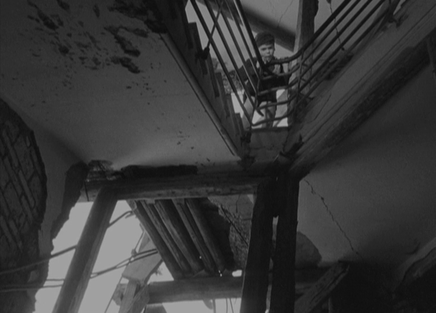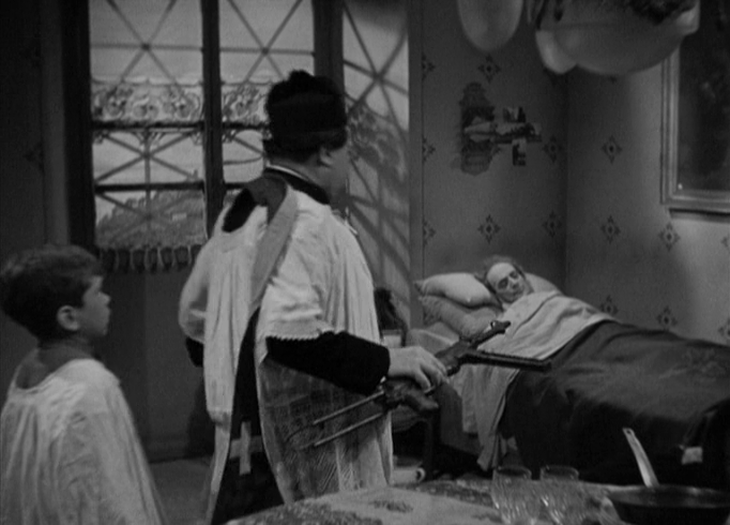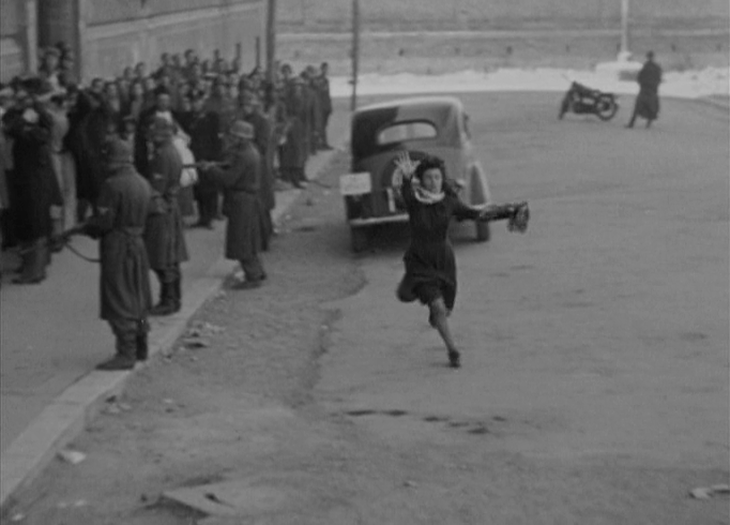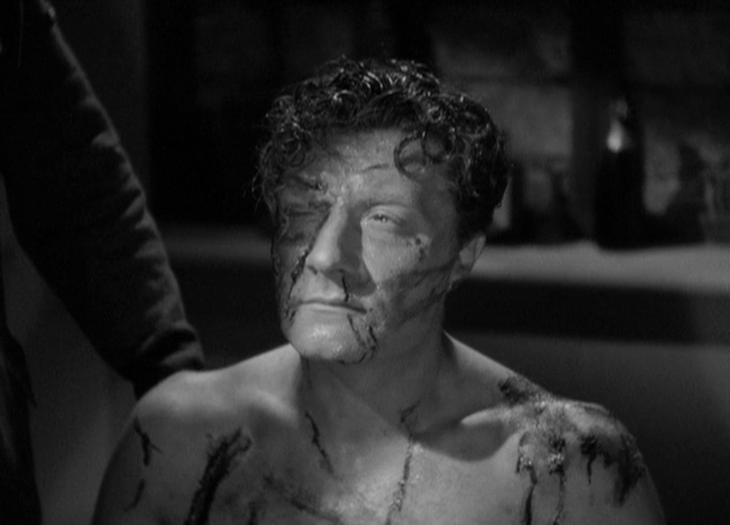 Robert Rossellini's Rome Open City is a harrowing ode to the brave men and women who stood up to Nazism in arguably the darkest time in Italian history, an emotionally powerful story of the importance of principles in a time of systematic oppression. While re-watching Rome Open City for the first time in years, one of the first things that struck me is the subtle sense of fear and anxiety gripping the city of Rome, as Rossellini effectively captures this false sense of freedom, one in which Romans can walk the streets "freely" yet find their whole lives, from food rations to curfew, dictated by the Nazi occupation. This aspect of the film is most deeply felt through the characters of Don Pietro, a priest who is secretly supporting the resistances cause, and Pina, a war-torn widowed mother, who is soon to marry Francesco, who unbeknownst to her is a member of the resistance. Don Pietro is primarily used as a communications carrier for the resistance, a man who uses the cloak of his theology to protect him from the same amount of strict scrutiny many Italians feel every day by the Nazi occupation. He is helping a partisan cause, putting himself in extreme danger in nearly every scene early on in order to help the resistance pass sensitive communication. Pina on the otherhand is a bystander when it comes to the shadowy game of cat and mouse between the Nazis and the resistance, a woman who ends up caught in the proverbial cross-fire so to speak, leaving Francisco distraught and blaming himself for her demise. One of my favorite scenes that captures this oppressive nature of the occupation is a simple enough sequence in which Pina argues with her sister, and what I perceive to be other members of her family, their catty infighting and the increased tension it brings being a direct result of the occupation, which has increased angst and anxiety among everyone involved. Near the end of this sequence of infighting, Francesco laments to Pina, "the winter will eventually end, summer will come, and we will be free", offering a semblance of hope and faith, but unfortunately Pina herself will not come to see this day. Rossellini's film is a shockingly authentic experience, considering it was made in the ruin of World War II, with the bombed out buildings towering over these characters serving as a genuine reminder of the reality of this horrendous war. Rossellini's direction is not overly stylized, being much more grounded in neorealism, with one of my favorite sequences being the Nazi raid, one that leads to Pina's unfortunately demise. Rossellini's use of the apartment complex's stairwell is arresting, as the filmmaker uses extreme high and low angels and tight compositions throughout this sequence as visual tools to evoke the restrictive nature these characters find themselves in, one in which their lives are oppressed by their occupiers. Of course, the most memorably aspect of Rome, Open City is its finale, one that finds members of the resistance, Francesco, Giorgio, and Don Pietro, captured by the Nazi regime, who begin to resort to torture in an attempt to get the information about the Resistance's operations they are looking for. Without going into too much detail, lets just say the whole sequence is a masterclass in dramatic execution, a truly powerful and tragic sequence that finds Don Pietro, played brilliantly by Aldo Fabrizi, pushed to the edge due to the torture of his colleagues, unwilling to betray his principles and what the Resistance stands for, no matter the cost. A brutal and harrowing portrait of Rome during the Nazi Occupation, Roberto Rossellini's Rome Open City is powerful portrait of the importance of standing up for ones principles while also serving as a touching ode to those who died doing so.
0 Comments
Leave a Reply. |
AuthorLove of all things cinema brought me here. Archives
June 2023
|



 RSS Feed
RSS Feed
